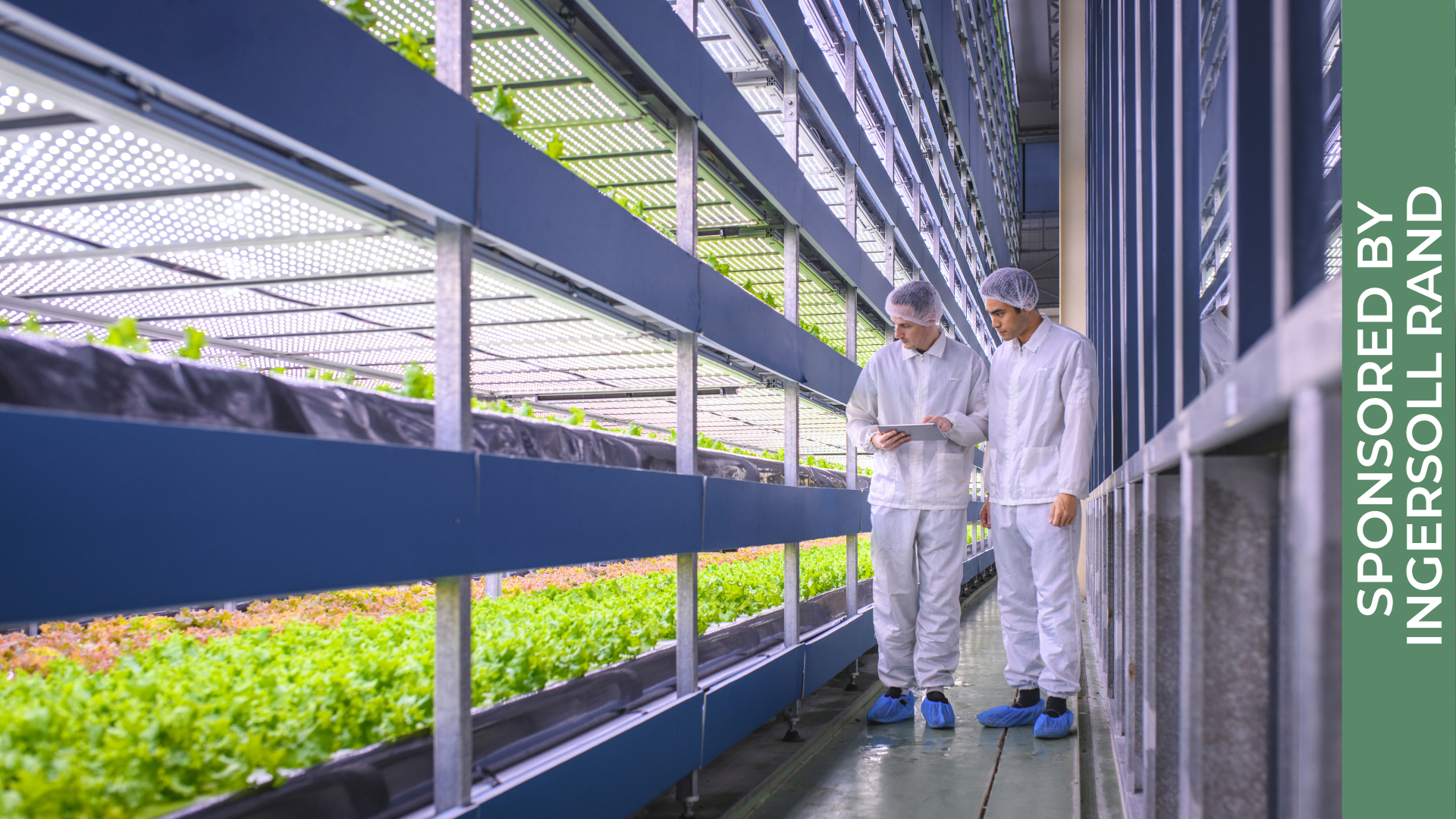Oct 11, 2022
Is Cold Plasma the Next Big Technology Breakthrough in Indoor Ag?
.png)
Editor’s Note: Technology for CEA is constantly evolving, and there is often crossover between technology that can be used for traditional outdoor agriculture and for indoor operations. In this article, we explore an emerging technology, cold plasma, that has established uses in outdoor agriculture, but that has previously not been utilized in indoor farms.
Given that controlled environment agriculture (CEA) is an emerging industry, there are always new innovations and exciting developments being uncovered. One such innovation that has emerged recently is cold plasma.
Cold plasma’s benefits are actually fairly well established in agriculture, where plasma technologies are used in decontaminating food products, cleaning and purifying of air and water, production of fertilizers, sterilizing seeds, and enhancing germination. But we’re just beginning to see applications in the CEA hydroponic sector.
Let’s dive in and learn more about cold plasma and its huge potential for increased yields, better nutrient uptake, reduction in pathogens, and more.
First Things First: What is Cold Plasma?

During the Ion Solutions nanobubble creation process, dissolved oxygen (DO) and reactive oxygen species (ROS) are injected into water.
Let’s start with plasma. Plasma is one of the four states of matter, along with solid, liquid, and gas. It is produced when gas is ionized. Ionization occurs when one or more electrons in a gas are separated from a molecule, which leaves positively charged ions and negatively charged electrons behind. This ionized substance left behind is plasma.
Plasma is the most abundant form of matter in the universe, but on earth it is a rarer sight than most other forms of matter. Lightning and the northern lights are natural examples of plasma, and plasma is what radiates light from fluorescent light bulbs and neon signs. According to MIT, researchers and industries utilize plasma for “making computer chips, rocket propulsion, cleaning the environment, destroying biological hazards, and healing wounds.”
“Cold plasma” in particular refers to non-thermal plasma, which ionizes gas through electron acceleration technology – as opposed to thermal plasma which uses extreme heat to achieve the same result.
Importance of Dissolved Oxygen

Plasma-activated water (PAW) is the outcome of the nanobubble injection process.
Plants require oxygen at their roots in order to grow. In nature, oxygen is available to plants in the soil, but in hydroponics, oxygen absorption can be harder to achieve with roots sitting in nutrient-enriched water.
Therefore, many hydroponic operations use bubblers, diffusers, or air stones to increase dissolved oxygen in the water. Dissolved oxygen is vital to plant health and nutrient uptake. Increased levels of dissolved oxygen are associated with higher yields, increased plant resilience and disease mitigation, and even increased nutritional value of plants.
However, many dissolved oxygen solutions currently on the market can have trouble maintaining consistently-high dissolved oxygen levels, are energy inefficient, and come with fewer co-benefits.
How Does Cold Plasma Help?

Ingersoll Rand’s Ion Solutions machine.
In a nutshell, cold plasma increases dissolved oxygen rates using less energy over a longer period of time, while also generating additional disinfection benefits.
Ingersoll Rand will soon be bringing a new product to market to make cold plasma integration in CEA easier than ever. Dubbed Ion Solutions, it simply uses air and electricity to create cold plasma, injecting nanobubbles of dissolved oxygen into the water.
These nanobubbles are thousands of times smaller than traditionally formed oxygen bubbles – so small, in fact, that they are “buoyantly neutral” – meaning they don’t readily float to the surface. Because of this, they are able to stay suspended in the water for months. Water treated with this cold plasma technique is referred to as “Plasma Activated Water” (PAW).
Disinfection and Sustainability Co-Benefits
The Ion Solutions technology is capable of injecting not only dissolved oxygen, but also “reactive oxygen species” (ROS) such as hydroxyls into the water. ROS are some of the most powerful, naturally occurring disinfecting compounds on Earth, thus eliminating the need for synthetic chemicals to treat water altogether! ROS can fight pests, diseases, biofilm, and algae buildup in water.
Ion Solutions not only has positive effects on the plants it supports but also on the environment it exists in. The use of cold plasma technology can lead to lower amounts of fertilizers entering waterways through stormwater runoff. This helps to decrease the potential for excessive nutrient buildup in waterways and the associated impacts on ecosystem health such as harmful algae blooms.

Reactive oxygen species (ROS) mitigate bacteria and pathogens.
Water treated with cold plasma that exits a facility and flows into the water supply is of extremely high quality—potentially higher than it was when it entered the facility—due to its increased oxygen content and a lack of synthetic chemicals. Additionally, since Ion Solutions is able to maintain high Dissolved Oxygen levels even in high temperatures, it may lessen a facility’s reliance on energy-intensive water coolers, which are often utilized in indoor agriculture.
Plasma Activated Water has a multitude of benefits and applications within the CEA space which can maximize efficiency and hygiene for hydroponic farms.
The Ingersoll Rand team is currently conducting research studies with the University of Florida and field trials with commercial indoor growing enterprises to quantify exactly how the technology can impact specific crops’ production and quality. Companies interested in joining as co-creation partners and getting early access to this technology can contact the Ion Solutions team online.
Those looking for more information about cold plasma use in CEA can download the complimentary eBook “Unlock the Potential of Cold Plasma for Oxygenating and Disinfecting Water”.
Contact Ingersoll Rand about their innovative Ion Solutions technology!
